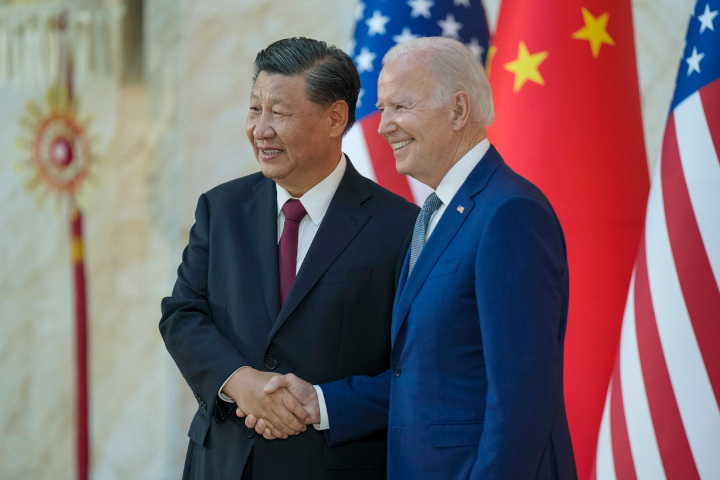
The following is a schematic elaboration of what can be perceived as the main drivers of attrition between the United States and China. It is simplistic, a summary, incomplete and certainly not wholly accurate, but it may provide elements to see some of the differences between the countries at a glance.
Some elements may not be self-evident, may be controversial, or may need a lot of explaining. But for the purpose of this short article, we decided not to go into a deeper dive, which itself could be also debatable, but to indicate broad themes that await further elaboration.
This first explanation of some of the reasons for attrition comes from being in China. In other places, there could be a different understanding of the situation. However, conscious of this, we believe the present mirror could be a first, objective-enough reading of the grand elements at stake.
Looking at the US-China situation and considering that the present tension may lead to war, it may be essential to see that it is not just a clash of interests. It is a clash of views about the economy, values, aesthetics, competition, and how to face a war.
The goal of highlighting these elements is to see the differences, to address, and to possibly solve them. Perhaps if at least some of these issues are clearly tackled and sorted out, they could help to defuse tension, bring attrition to a minimum sustainable level, or maybe even to solve the tension completely. We know it is very difficult, but even more so, it may be essential.
We are aware that the present situation is not simply bilateral. Many countries are now involved in attrition with essential stakes in it. Because of this, improvements in US-China relations might bring benefits to the overall global state of affairs.
|
China |
United States |
|||
|
Economic Development |
||||
| Mainstream productivity approaches: history and the present | ● History: Agriculture
●The present: Process manufacturing |
● History: Since the Civil War, dominated by industry and trade, moving from local protection to national protectionism and the pursuit of semi-exclusive gains
● The present: Financial-led trade driving for special gains on a global scale |
||
| Mainstream benefit (means of production) distribution methods: history and the present | ● History: The royal court’s special powers on «land and population as the mainstream means of production»
● The present: Special state rights to all means of production (land, population, key technology, capital) |
● History: Local politics collaborates with capital to exercise power over land, population, and key technologies
● The present: Capital collaborates with local/federal politics to achieve special gains on a global scale |
||
| Patterns of political power generated by way of benefit distribution | ● History: landlord – great landlord – royalty
● The present: local – central |
● History: state – federal ● The present: state – federal – global |
||
| The mainstream values of the whole society shaped by the above three factors | ● Honor: The pursuit of the feeling of authority and external rituals
● Authority: The pursuit of dominant power over key means of production ● Personal security: Comes from personal identity to the subordinate (group) object, encouraging dedication and sacrifice to the group to which one belongs |
● Preference for risk: A common attribute of maritime trade and derived from old piracy
● Focusing on discernment: A core competency for risk transfer ● Personal security: From the degree of retention of one’s identity |
||
| The dominant aesthetics formed by the above four factors, and the resulting culture | ● Pursuing a grand narrative: Bringing security to all individuals
● The pursuit of ritual: The psychological projection of authority ● Encouragement of individual sacrifice |
● Pursuing direct core interests (money talks, bull* walks)
● The cult of independent thinking ● Sensitivity to individual rights and interests |
||
|
Competition |
||||
| Cultural attitudes on competition | ● Competition is equivalent to zero-sum contention
● Focus on the negative emotions brought about by the competitive process |
● Competition is everywhere
● Focus on positive efficiency results from competition |
||
| Values and attitude towards competition | ● Competition within the same level in the hierarchy
● «Peace is the best»; sees competition as a precursor to conflict |
● Focus on compliance control of the competition process
● Special gains to avoid the scope of competition compliance without breaking the narrative |
||
|
Conflict |
||||
| Looking at conflict | ● Winner takes all ● Two slaps on the wrist: believing Clausewitz’s «war is an extension of politics» |
● Give it all
● Very proactive |
||
| Conflict resolution | ● Power comes from the barrel of a gun
● Fight to promote talk |
● Overwhelming solutions: «unconditional surrender» in World War II; Iraq; Afghanistan
● Withdrawal beyond the conflict level after «reckoning»: Afghanistan and Iraq |
||
|
War |
||||
| Land warfare as dominant thinking | Impact of Sunzi’s dominant thinking about land warfare on army building and war preparation:
● The use of terrain: Bring to geography ● Military-political synergy ● Land warfare characteristic idea: Warfare to achieve defeat of the enemy |
|||
| Naval warfare as dominant thinking |
Implications of the doctrine of sea-power-dominated thinking on naval warfare for military construction and war preparation: ● The battle for sea control cuts across defense strategy ● Naval warfare characteristic idea: The main mode of warfare preparedness idea is «search and destroy» |
|||





